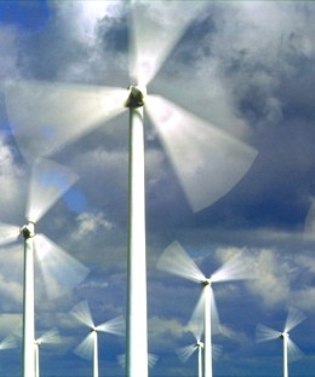New Source of Spring Water Supply , Windmill power condense moisture from thin air
Advice and Guide, Interesting StuffWater is our most precious natural resource. It covers almost three-quarters of the surface of our planet and makes up 70-75% of our total body weight.
Now Dr. Max Whisson, a retired public health official, says he has devised a way in which we can use as much water as we need or want without disrupting the environment. Whisson says his inspiration came from….
the desert beetle and the self-sufficiency of ancient tribes.
In the Ukraine, ancient cultures cooled air to produce water using pyramid-shaped rock structures.
Using that ancient concept of extracting water from air, Whisson designed a highly efficent wind turbine to drive a refrigeration system which cools air and then condenses the moisture from it. The wind both carries in the water and provides the power required to separate the water from the wind.
“Not many people know that there is actually a huge mass of water out there before our eyes,” says the machine’s inventor. “The concentrations are low so you have to process a very large quantity of air to extract a decent quantity of water.”
According to Whisson, 1,000 cubic meters of air will yield 10-15 liters of water. If you consider that a gentle breeze blowing through an average-sized window produces 1,000,000 cubic meters of air per hour, then within 3.6 seconds, enough air would flow through that window to produce 10-15 liters of water. In one hour, enough air would flow through to produce almost 10,000 liters.
The biggest hurdle Whisson faced was coming up with a way to cool the air sufficiently to produce water through the condensation process. He hit upon the idea of a windmill consisting of several blades located around a vertical column. That way wind can be brought in from any direction.
The air is then ushered into a “chiller” box, a chamber holding refrigerated metal plates upon which the water molecules in the air condense from the gaseous state into the liquid (water) state.
It was the desert beetle which inspired the design of the collection plates. This beetle extracts drinking water from the fog which condenses on its back. The water then trickles down the beetle’s back to its mouth.
Even a gentle breeze of 2 kilometers per hour will generate water but stronger winds generate more power and therefore are more efficient at producing water. The efficiency rate increases with temperature as well since the hotter the temperature, the more water laden the air. Whisson claims his unit will work in areas of low humidity.
“The systems we use in providing water around the world have caused the destruction of rivers and ecosystems,” says the inventor. “This will work whether there is a drought or no drought.”
Such a system as Whisson’s requires a lot of energy to work. But he is adamant his wind-driven turbine is up to the task. It is also highly eco-friendly and will not upset the hydrological cycle while providing unlimited water.

April 8th, 2010 at 3:54 am
Extremely interesting blog post thanks for sharing I just added your site to my favorites and will check back.